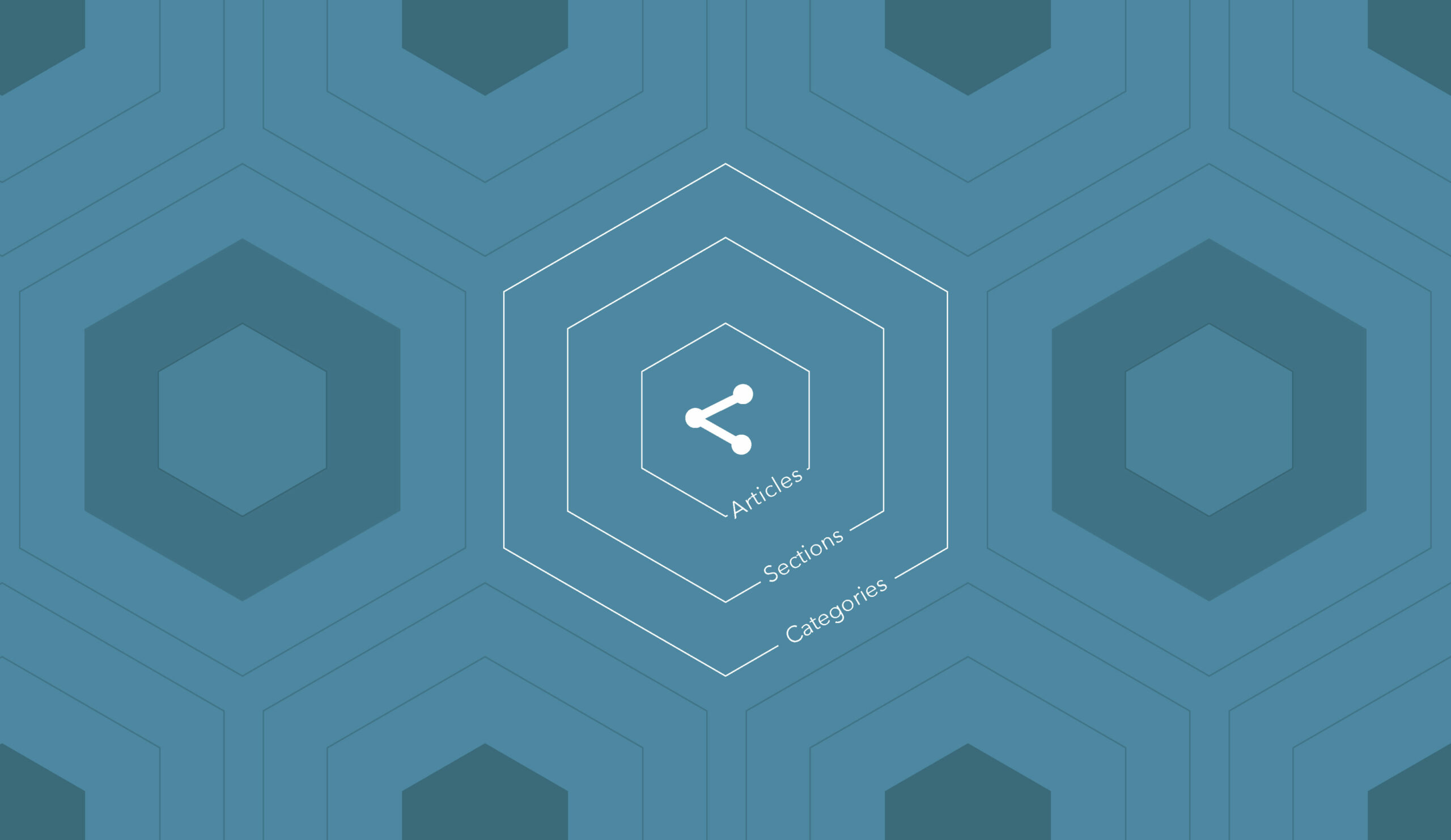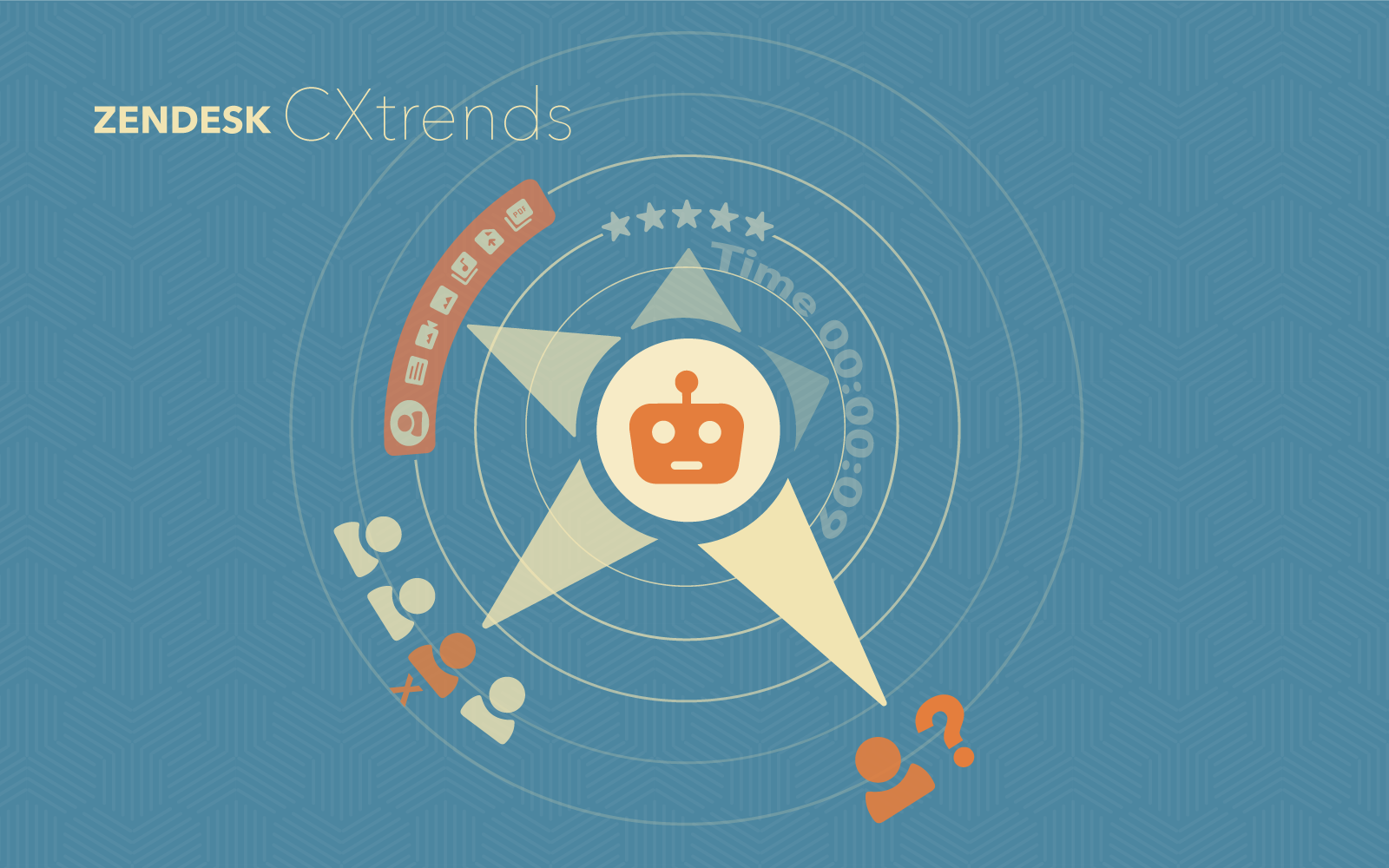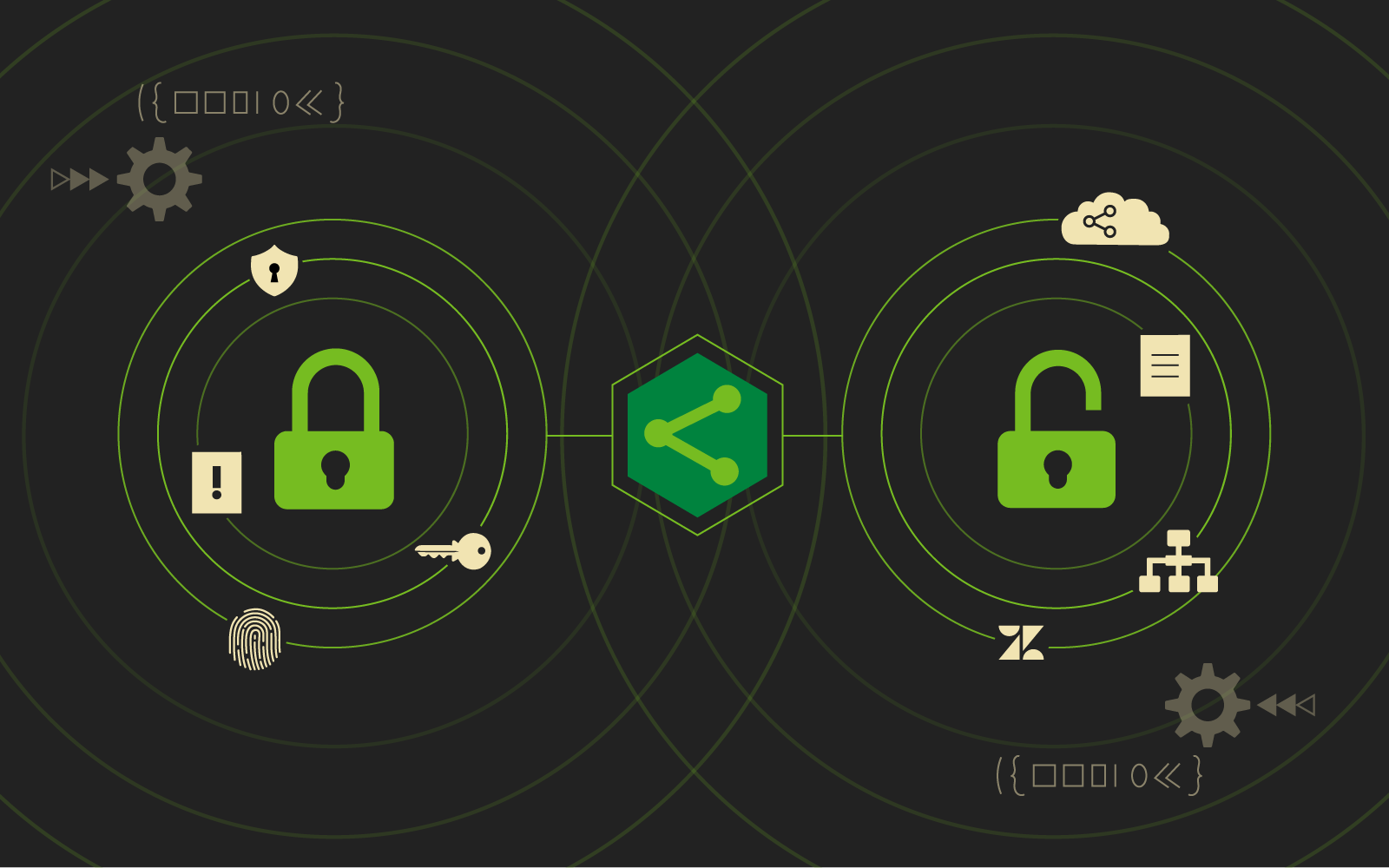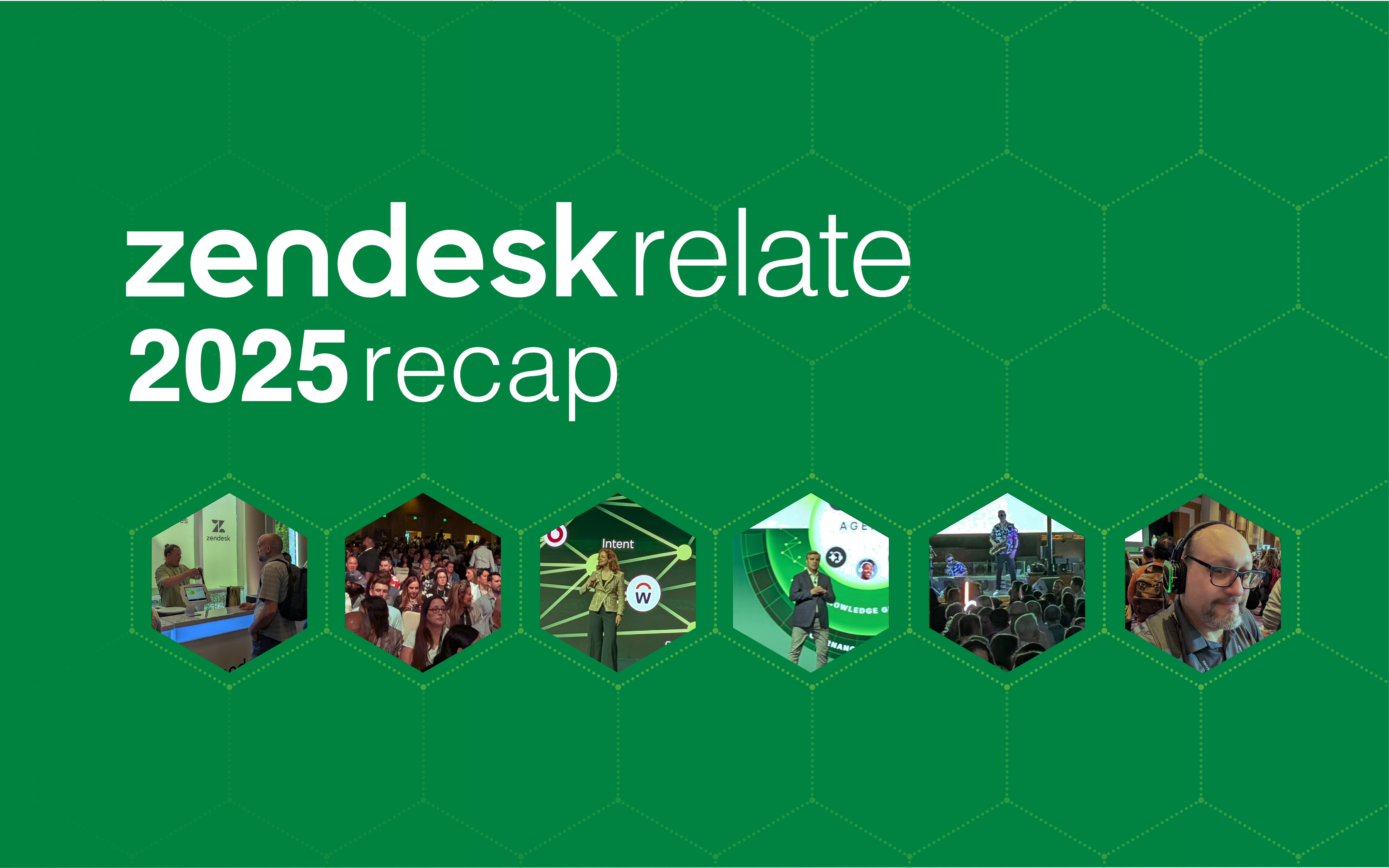How To Organize Help Center Content Like a Pro
A powerful customer service team is crucial to delivering a great customer experience for any business. Your satisfaction rate is higher when consumers are able to get the answers they need quickly. At the same time, ensuring your support team has the time to focus on harder-to-solve issues is just as important to guarantee that every consumer’s concern or issue is addressed in a timely manner.
This is where Zendesk Guide comes into the picture. This powerful knowledge base software allows customers to easily find answers to many of their questions while relieving the burden of your support agents, so they can focus on more pressing matters. Although there is much more to an optimal help center set up than content structure, it is the most appropriate place to start to ensure your set up gets off on the right foot.
This article is everything you need to know to organize your knowledge base with Zendesk Guide.
Understanding Zendesk Guide Content Hierarchy and Permissions
One of the common questions we get from new users of Zendesk Guide is how to structure their help center content. This is a great question. Figuring out your content structure is a critical building block for creating a well-organized library of knowledge. It is the foundation for the long-term success of your knowledge base software.
For starters, it is important to understand the purpose of a content hierarchy, how it works, and how to use it to your advantage.
Zendesk Guide Knowledge Base Organization
The Zendesk Guide content hierarchy is composed of categories, sections, and articles.
- Categories are the top-level parent container.
Your help desk must contain at least one category but depending on how extensive your library of materials is, perhaps it will make sense to have as many as four categories. An example of one of these top-level containers is introductory content. You could call this “Intro to [business name]” or “Getting Started” and it might include sections like App Integration, Navigation, and Setup. Other categories might include frequently asked questions, basic knowledge about your product/industry, or perhaps busting common myths. If your company has multiple products that are each relatively complex, it might be helpful for your customers to start by choosing which product they need help with. That way, all content going forward is applicable to their needs and experiences, and it’s easier for them to further drill down into the help center and find exactly what they need.
- Sections are the second-level organizing container.
Sections are nestled within categories. They are the second-tier of content organization. To determine your sections, start by examining your entire resource library. What are the topics that stand out? Many articles will have something in common – what is that something? You might find that you have 5 articles on billing, so billing should be one of your sections.
If you don’t have a very big library of content yet, you can examine frequently asked questions for topics and trends. You might have quite a few different kinds of customer questions that are all fundamentally about one thing, like reporting. Then you know that’s a section. Inside each section are a bundle of related articles. The goal is to make sure all the articles inside of a section share a common topic so that any additional articles you recommend will be relevant to a customer with a question or problem in that topic area.
- Articles are the third-level of your content organization scheme.
Articles are what your customers are ultimately looking for – these are individual pieces of content that contain the information to solve their problems. It can be useful to think about articles falling into two types: helper versus monolithic.
Content that’s meant to provide a quick answer, like how to reset a password, is considered a “helper” article. These pieces of content are meant to be short and sweet. The answer is generally quick and uncomplicated. If there are related questions or variations on how to solve the problem, it’s generally best to break these up into several smaller “helper” articles. This makes for a better customer experience. For a basic question, they’re expecting a simple answer that will only take them a second to implement.
Created long-form answers that take up multiple pages or “monolithic” content should be reserved for complex problems that require you to be much more thorough in order to provide your customers with an actionable answer. Dev documentation is a good example of a subject requiring a “monolithic” answer.
Help Center Permissions
Management and viewing permissions are set at the article level. Articles can either be visible to consumers and internal employees or just to internal employees. It is important to note that if all articles in a section are set to internal, then the section will not be visible to external viewers.
Structuring Your Internal and External Knowledge Base
When thinking about your content structure, likely the main focus is on your external knowledge base. It’s natural to think about the customer experience in your help center mainly from a self-service point of view. But the reality is that while some customers prefer to be able to find their own answers, others will always opt to email or call support.
Deliberate and well-thought-out arrangement of your help center content benefits all of your customers, no matter how they chose to contact you. A well-structured internal knowledge base allows your customer support team to be able to quickly and easily find the resources to help your customers. Similarly, content structure is the key to making sure your customers can easily find the content they need when they need it.
Categories, Sections, and Articles: Keep it Simple
There is a common misconception that the more categories and sections you have, the more organized and easy to find your content will be. Unfortunately, the opposite is often true. As the saying goes, quality beats quantity any day. Too many categories and sections will create confusion and leave your employees and customers frustrated and unable to find what they are looking for.
Simple is better. When you start out, you may only need one or two categories with just a couple of sections each. This is okay. Do not try to add categories and sections that aren’t necessary. As your help center expands and your business grows, you will have natural opportunities to create additional categories and sections.
Changing the content hierarchy after the fact can be stressful and time-consuming. If your team is having difficulty deciding how to structure the help center, or deciding which categories and sections are the most critical, it’s worth discussing it with a professional. Not only can you get expert advice and save yourself time and frustration down the line, but with the help of a pro, you can also quickly do some user testing to make sure the structure you choose resonates with your customers.
Get in the Mindset of Your Customers
When organizing your external, or customer-facing knowledge base, think like your customers. What are they most likely to have questions about? Do a little digging through customer emails to the customer service department. What are the common themes? Then create sections to address those questions.
An example might be “Using Discount Codes”. Articles in this section would then be related to how to use discount codes and how to fix any issues that consumers may come across. Another section could be “Troubleshooting Common Problems”. The articles under this section would address common issues consumers run into during setup, installation, or use and how to fix them. Getting in the mindset of your customers will make it much easier for them to find the information they are looking for.
Make sure the names of your categories, sections, and articles are easy to understand and accurately describe the content within. Steer clear of extremely technical terms are overly wordy titles. Think about what your customers may type in as keywords and use those as your category and section titles.
How To Structure An Internal Knowledge Base
The best way to organize your internal knowledge base will depend on the size of your company, the complexity of your industry, and/or your product range. It might be helpful to start by looking at all your workflows, and getting feedback from as many employees as you can. Try to identify common issues, questions, and time-consuming actions.
This will help you to recognize topics that need to be addressed inside your internal knowledge base to make it the most effective that it possibly can be. After gathering as much input from employees as possible, you’ll need to spend some time identifying trends in responses and narrowing the list down.
For example, based on feedback, you may decide that it makes sense to organize by department or job title. In other cases, it may be beneficial to structure your internal knowledge base around frequently asked questions, and create categories such as “Troubleshooting IT issues.”
The structure that is right for your company today may not be the same one that is right for your business in 5 years. As your business grows, you may find that you need to change your structure. If you follow the Zendesk structure, you can add-on to your existing categories without a problem. When you have taken the care up front to set up a solid structure, it will be that much easier to scale alongside your business.
Support Your Team and Provide World-Class Help to Your Customers
Your help center should be more than just an afterthought. It should be a part of your overall business strategy. When you are intentional about creating both the structure and layout of the help center and the useful content that it contains, customers easily get their questions answered and come away delighted. What’s more, customers who get the help they need are more likely to buy from you again or renew a subscription, and even to recommend your brand to their family and friends.
Want to level-up your help center but don’t know where to start?
729 Studios are experts in their field, with over 13 years of experience working with the Zendesk Suite along with a wide variety of other systems. We are a team of designers, developers, project managers. and solution architects. 729 is a full-spectrum technology consulting agency with complete design and development capabilities.
For things like:
- Questions on Content Structure. You may have a unique business model that requires some creativity and professional expertise when structuring your help center content. We can help you upfront, avoiding problems down the line.
- Subsections are new to Zendesk. Wondering how to implement them? We can help.
- Better reporting. Gain a deep understanding of how your help center content is performing, particularly before expanding your knowledge base.



